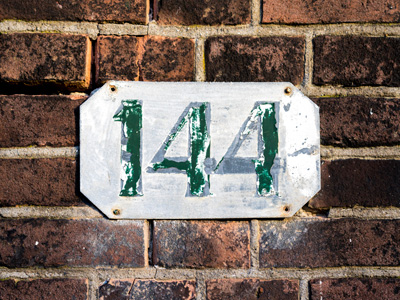
How many times does the number 144 appear in this quiz?
Verbal Reasoning - Related Numbers 4
This Math quiz is called 'Verbal Reasoning - Related Numbers 4' and it has been written by teachers to help you if you are studying the subject at elementary school. Playing educational quizzes is an enjoyable way to learn if you are in the 3rd, 4th or 5th grade - aged 8 to 11.
It costs only $12.50 per month to play this quiz and over 3,500 others that help you with your school work. You can subscribe on the page at Join Us
In this series of quizzes, you need to find the relation between the three numbers in brackets. The first and third numbers will have been either added, subtracted, multiplied or divided to get the middle number. Find out which one it is and do the same to the last bracketed numbers. An example has been done for you.
(12 [4] 48), (19 [6] 114), (12 [ ? ] 36)
3
4
5
6
The correct answer is 3.
This is because 12 and 48 are related by dividing 48 by 12 to get the number in the middle. 19 is related to 114 in the SAME way (dividing 114 by 19 results in 6). The relationship is DIVIDE.
Choose the correct answer from the four choices available.
(123 [100] 23), (355 [100] 255), (471 [?] 71)
Choose the correct answer from the four choices available.
(360 [24] 15), (629 [37] 17), (779 [?] 19)
Choose the correct answer from the four choices available.
(49 [51] 2), (78 [85] 7), (64 [?] 9)
Choose the correct answer from the four choices available.
(16 [192] 12), (20 [340] 17), (11 [?] 27)
Choose the correct answer from the four choices available.
(11 [154] 14), (12 [144] 12), (13 [?] 13)
Choose the correct answer from the four choices available.
(68 [17] 4), (144 [24] 6), (168 [?] 21)
Choose the correct answer from the four choices available.
(37 [44] 7), (44 [51] 7), (51 [?] 7)
Choose the correct answer from the four choices available.
(44 [30] 14), (61 [38] 23), (79 [?] 26)
Choose the correct answer from the four choices available.
(5 [380] 76), (7 [147] 21), (9 [?] 18)
Choose the correct answer from the four choices available.
(110 [45] 65), (540 [266] 274), (333 [?] 188)
Ready for more?
not all...
quizzers. Try to win a coveted spot on our Hall of Fame Page.







